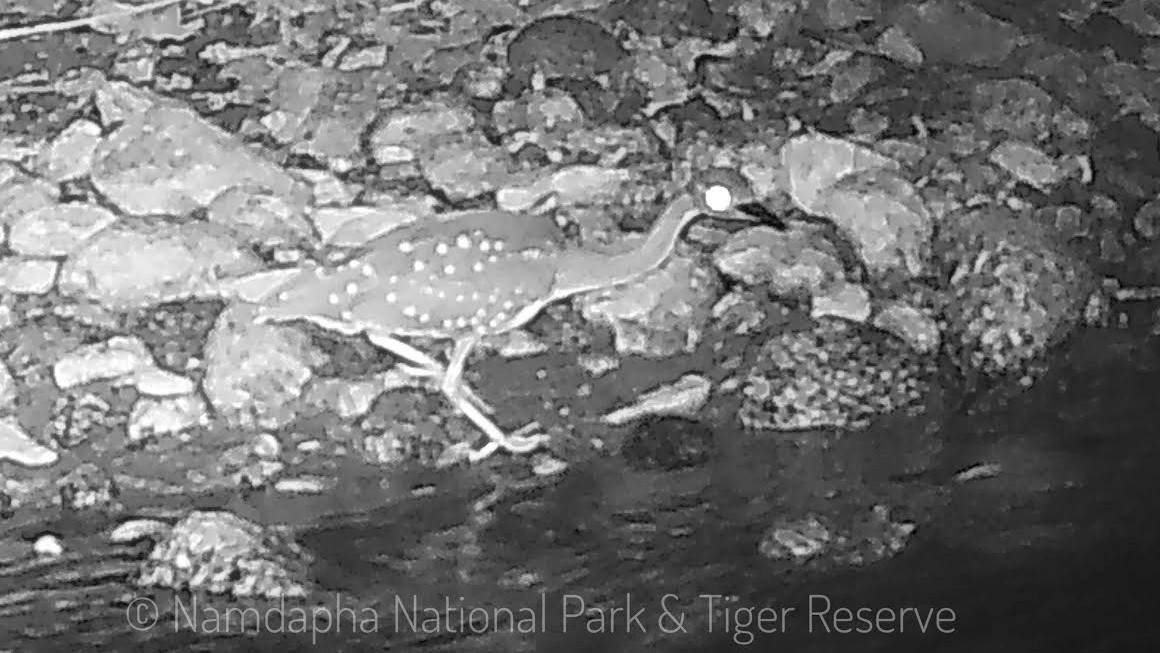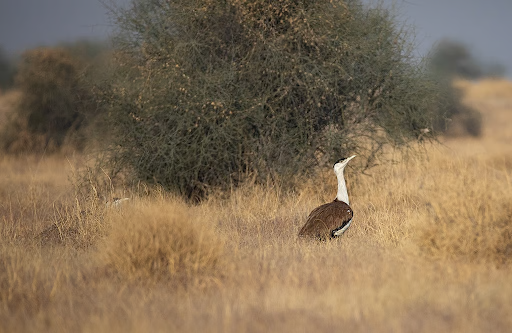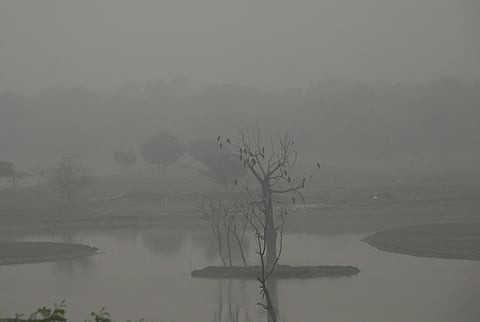Description
Disclaimer: Copyright infringement not intended.
Context:
The rare sighting was captured on cameras installed by the forest staff of the Namdapha park.
About White-Eared Night Heron:
|
Feature
|
Details
|
|
Scientific Name
|
Oroanassa magnifica
|
|
Physical Description
|
Medium brown heron with brown-streaked breast and white patch on the side of the head
|
|
Habitat Range
|
Primarily in southern China and northern Vietnam
|
|
Global Population
|
Estimated fewer than 1,000 individuals
|
|
Behavior
|
Extremely secretive and nocturnal; rarely observed in the wild
|
|
Conservation Status
|
Endangered – IUCN Red List
|
About Namdapha National Park and Tiger Reserve:
- Location: Changlang district, Arunachal Pradesh; near India–Myanmar border; part of Eastern Himalayas and Indo–Burma biodiversity hotspot.
- Area: 1,985 km² (core + buffer) — India’s third‑largest national park; declared a tiger reserve in 1983 under Project Tiger.
- Elevation: Ranges from ~200 m to ~4,571 m at Dapha Bum peak.
- Name origin: From the Namdapha River (Nam = water; dapha = origin), flowing north–south across the reserve.
Geography & Vegetation
- Biogeographic realms: Convergence of Palearctic and Indo-Malayan zones
- River systems: Noa‑Dihing, Namdapha, Deban, Diyun, Dapha rivers.
- Vegetation zones:
- Northern tropical evergreen
- Tropical moist deciduous
- East Himalayan moist temperate
- Moist alpine scrub
Notable flora:
- Exclusive trees: Pinus merkusii, Abies delavayi
- Rare orchids: Blue Vanda (Vanda coerulea)
- Medicinal plant: Mishmi Teeta (Coptis teeta), used by local tribes; export banned.
Biodiversity Highlights
- Flora: Over 1,000 plant species (dipterocarps, orchids, ferns, gymnosperms).
- Fauna: ~1,400 animal species.
- Big cats: Tiger, Leopard, Snow Leopard, Clouded Leopard – only park globally with all four.
- Primates: Hoolock gibbon (India’s only ape), capped; stump‑tailed; pig‑tailed; Assamese/ rhesus macaques.
- Critically endangered mammals:
- Namdapha flying squirrel (Biswamoyopterus biswasi), first discovered here; last recorded 1981.
- White-eared night heron camera-trapped recently (≤1,000 individuals globally) .
- Other fauna: Elephants, Asiatic black & sun bears, red panda, dhole, takin, Himalayan ungulates, pangolin, otters.
- Birds/Insects: 425+ bird species incl. hornbills, white-winged duck; diverse Lepidoptera including four‑ringed butterfly .
Conservation Significance
- Status:
- Declared National Park & Tiger Reserve in 1983.
- Listed as an Eco-Sensitive Zone in 2024.
- Habitat corridors: Elephant migration interrupted by encroachment since 1996; a lone elephant captured on camera after 12 years.
- Research hotspots: Rich primate, carnivore, and avian biodiversity – critical for studies on tropical-to-temperate gradient adaptations.
Tribal Interface
- Local tribes: Lisu, Singpho, Tangsa, Chakma – traditionally forest-dependent; now custodians in conservation initiatives.
- Community ties: Ethnobotanical knowledge (‘Mishmi Teeta’) and role in anti-poaching + habitat preservation efforts.
Source: Deccanherald
|
PRACTICE QUESTION
Q. Consider the following statements about the White-Eared Night Heron:
- It is primarily found in South America and is active during the day.
- It was recently camera-trapped in Namdapha National Park, Arunachal Pradesh.
- It is classified as Critically Endangered on the IUCN Red List.
Which of the statements given above is/are correct?
- 1 and 2 only
- 2 only
- 2 and 3 only
- 1, 2 and 3
Answer: B
Explanation:
Statement 1 is incorrect: The species is found in southern China and northern Vietnam, not South America, and is nocturnal, not diurnal.
Statement 2 is correct: It was recently camera-trapped in Namdapha National Park.
Statement 3 is incorrect: It is listed as Endangered, not Critically Endangered, on the IUCN Red List.
|










